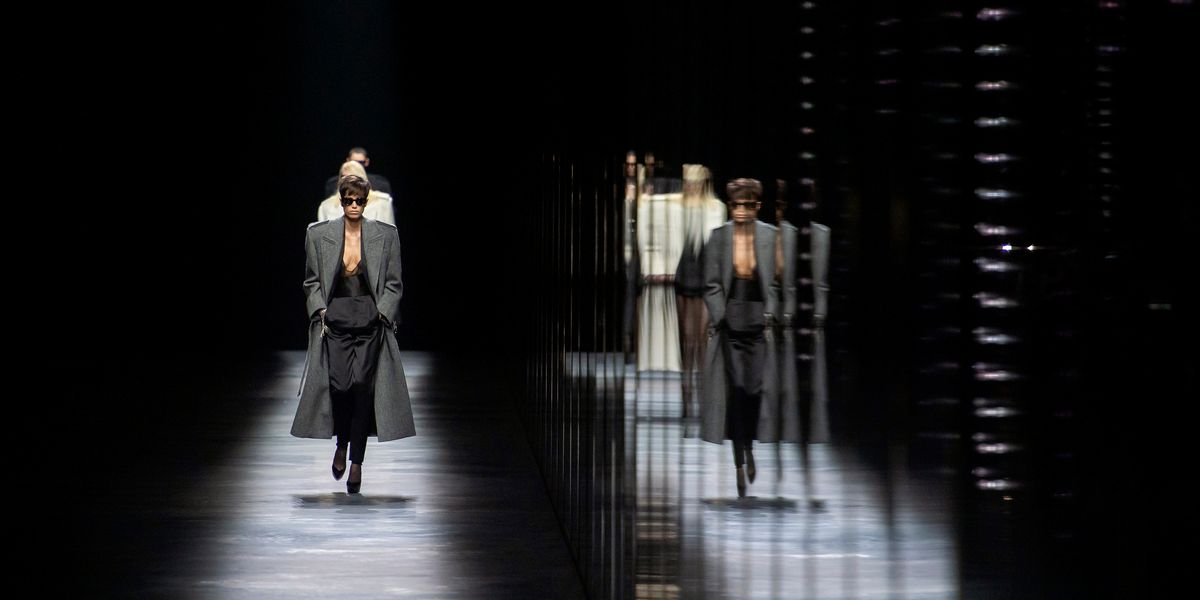
As we continue trudging forward in the digital age, the current consumerist market has undoubtedly become over-saturated with options. With the expansion of e-commerce platforms and the influx of fashion influencers filling our social feeds, consumers are overwhelmed with the choices they now have at their finger tips. Luxury fashion brands have kept up with the zeitgeist, vastly expanding the number of looks they showcase each season to meet the exceeding demand of their potential customers. However, as designers begin churning out collections that eclipse the size of previous seasons, the quality versus quantity dichotomy is inevitably called into question.
Related | Balmain for the New Punk World
According to a recent InStylearticle, it used to be considered antiquated to present massive collections. As the industry began expanding, 40 looks in a single show was considered to be a loose standard among designers. Sixty looks was similarly thought of as somewhat ordinary, however only among the industry's largest brands. Eighty ensembles was considered tangential to some extent, exclusive to those brands who had the staff and production budgets needed to carry out such an affair.
During a recent interview, Vogue Editor in Chief Anna Wintour spoke of how everything from the typical fashion show uniform has shifted since she entered the industry. "It used to be that at the couture shows, you would get into full black-tie for the men, and evening dresses for the women," Wintour noted. She explained that now, with the multitude of photographers, videographers, and editors attending some of the larger shows, sometimes 2000-3000 people will attend a single runway presentation. "It's gone from being this very private, small world to something people look at from a global perspective."
This fashion month, however, some of the industry's largest houses across the four major hubs, presented collections that included more than 100 looks. Saint Laurent, Balenciaga, Balmain, and more sent three-figures worth of ensembles down their runways. Prior to the expansion of this phenomenon, some of the industry's most prolific designers undoubtedly edited their original collections down to the 40-80 looks ultimately presented, however this seemingly frantic expansion seems worthy of a discussion regarding how fashion is changing.
Related | Saint Laurent's Rocker Chic Proportions
Gucci's Alessandro Michele has been widely applauded since his appointment to creative director in 2015. The designer often showcases large collections in the grand scheme of the industry; nevertheless he's established that he has the creative direction necessary to execute massive shows. Setting this precedent however likely prompts competing designers to follow suit, which can often lead to the reveal of a sartorial gap, and thus hurting the general reception to the brand's ventures.
In an article published by Voxlast month, the author stipulates that the day-old fashion week: dead or alive? debate remains at the forefront of the conversation, given bi-annual showcases aren't relevant to the way the modern consumer purchases clothing. Part of their assessment is that fast-fashion brands are capable of turning around entire collections in the time span of two weeks, versus the "preview" that fashion week designers provided to buyers and editors months before their collections became available for purchase. Despite the emergence of the see now, buy now response to the fast-fashion threat, there remain seismic waves threatening the fashion week model, one of which being the pace at which the industry calendar is moving is bleeding designers' creativity dry.
However, despite the turmoil a quality versus quantity shift could potentially create, industry discomfort doesn't always signal fatal decline. The fashion industry forces us to ask ourselves questions about the ways in which we consume. There's certainly a reason legions of fashion enthusiasts still flock to the pages of Vogue Runway to catch a glimpse at the latest collections, and industry leaders travel far and wide to preview sartorial changes of pace. This newfound dynamic could certainly alter the way we digest high fashion, however it also has the potential of providing brands with a lesson that more isn't always better.
Photo via Imaxtree